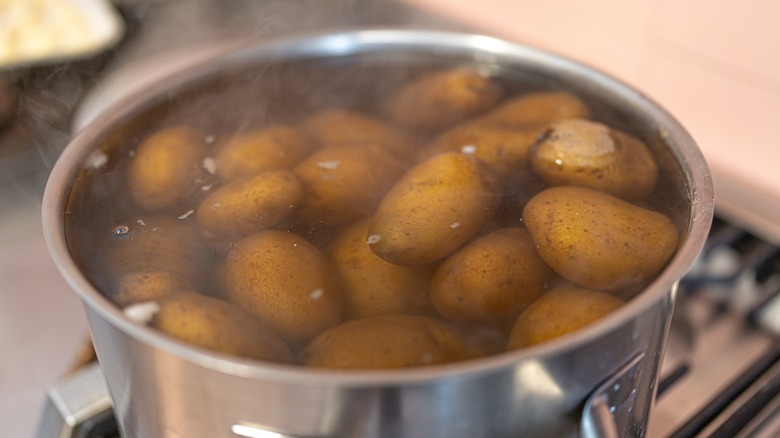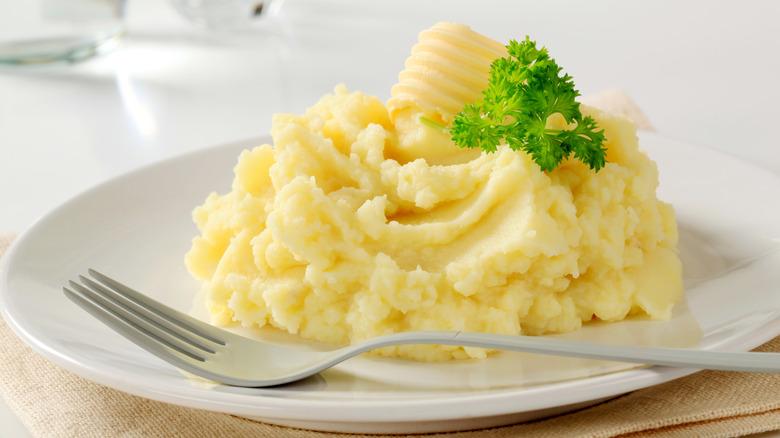Why You Should Always Boil Starchier Potatoes Whole Rather Than Cubed
The three most popular types of potatoes in the country are all russets. We associate these starchy, thick-skinned potatoes with loaded baked potatoes and french fries. While baking, frying, and roasting are the recommended methods for starchy potato types, experts also swear by starchy potatoes for mashed dishes. Mashed potato recipes involve boiling the potatoes, which is usually more associated with waxy potatoes and may sound counterintuitive to showcasing a starchy potato's textural attributes.
That said, boiling starchy potatoes will still yield delicious results. The key is to boil them whole instead of cubed or halved like with waxy varieties. Starchy potatoes are characterized by low moisture and high amylose starch content. When cooked with dry heat, the amylose starch creates a fluffy, pillowy consistency with a delicious textural contrast of crisp and firm skin. However, when you boil these starchy potatoes after chopping them up, their dry pulp draws in all the water and becomes oversaturated, resulting in disintegration and gummy pulp.
To avoid this problem, boil starchy potatoes whole — their skin and density will prevent oversaturation and keep the pulp from disintegrating. Furthermore, the Idaho Potato Commission asserts that boiling russets with their skin on is healthier as it maximizes their nutrient retention and flavor. You can always remove the skins after boiling by cutting the potatoes in half lengthwise and scooping the pulp out with a spoon.
Boiled potatoes: tips and uses
Along with russets, sweet potatoes, yams, long white, and King Edward are also starchy varieties to boil whole with their skin intact. As with most cooking methods, boiling potatoes that are similar in size ensures uniform cooking times. If you can't find similar-sized starchy potatoes, you might have to remove the smaller potatoes from the pot a few minutes before the larger potatoes. Boiling whole potatoes takes anywhere from 15 to 30 minutes depending on the size of the potatoes. Water and salt are all it takes to achieve rich and earthy boiled potatoes, but you can always add flavor by boiling potatoes in broth, stock, or even milk.
The most common use for boiled starchy potatoes is for mashed potatoes blended with cream or milk and seasoned with salt and pepper. You could also use boiled starchy potatoes as the foundation for a rich and luxurious potato pancake batter or as the stuffing for perogies. Alternatively, you could put them through a potato ricer and mix them with flour for homemade potato or sweet potato gnocchi.

